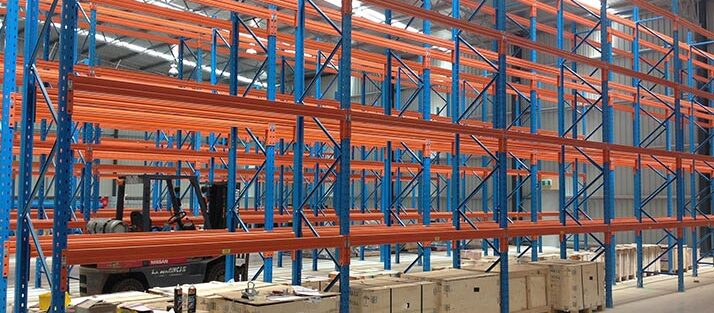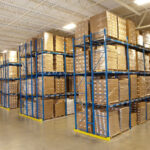Pallet racking systems enable the efficient functioning of warehouses or related facilities that utilise pallets to ship and store products. These systems aim to maximise vertical space in storage facilities while keeping products easily accessible and organised.
There are variations of pallet racking systems, each designed to serve specific purposes. Some of the most popular racking systems include drive-in, selective, push back, pallet flow, and double deep racking, to name a few.
Selective racking
Out of these, selective racking is arguably the most popular setup. These are basically metal shelves built to fit pallets. Selective racking allows for unfettered access to any pallets and order picking at lower levels. It also supports First In First Out.
Selective racking should ideally be used when there is a low number of pallets per SKU and when you prefer free access to any pallet at any given time.
Drive-in racking
As opposed to a selective racking system, drive-in racks are arranged in the form of a lane with rails on each side. The pallets are arranged on the side rails and are driven to the back to the rear with the following pallets placed in front.
Supporting First In Last Out, drive-in racking systems work best when high density storage is a requirement. It also works when you don’t want to mix SKUs within each lane in racking.
Push back racking
This racking system is similar to drive-in racking. The main difference is that these are designed to push forward pallets. This system is used only for full pallet storage. Push back industrial pallet racks systems are ideal when you have more pallets per SKU and require greater storage density.
Pallet flow
This also works similar to push back racking, but involves gravity and rollers. Here, pallets are put on gravity roll tracks and these move from entry to exit. This type of racking system is apt for FIFO operations that move at a fast pace. Pallet flow systems are also best utilised when you have a high number of pallets per SKU and high space usage is a requirement.
Double deep racking
This type of system requires pallets at the lower levels to be placed on beams while guide rails are used at the higher levels. With a FILO mechanism, a double deep racking system requires a fork lift truck with extendable reach and a camera that can assist the operator.
Narrow aisle racking
There are two types of narrow aisle racking, one that uses turret trucks or articulated reach trucks. This pallet racking inspection system works best when you have large amounts of goods moving and want to emulate characteristics of selective racking.
Mobile racking
This refers to mobile bases with wheels. Mobile racking is apt in a situation where building and operating expenses are high, and massive storage is required while maintaining moderate movement of pallets.





